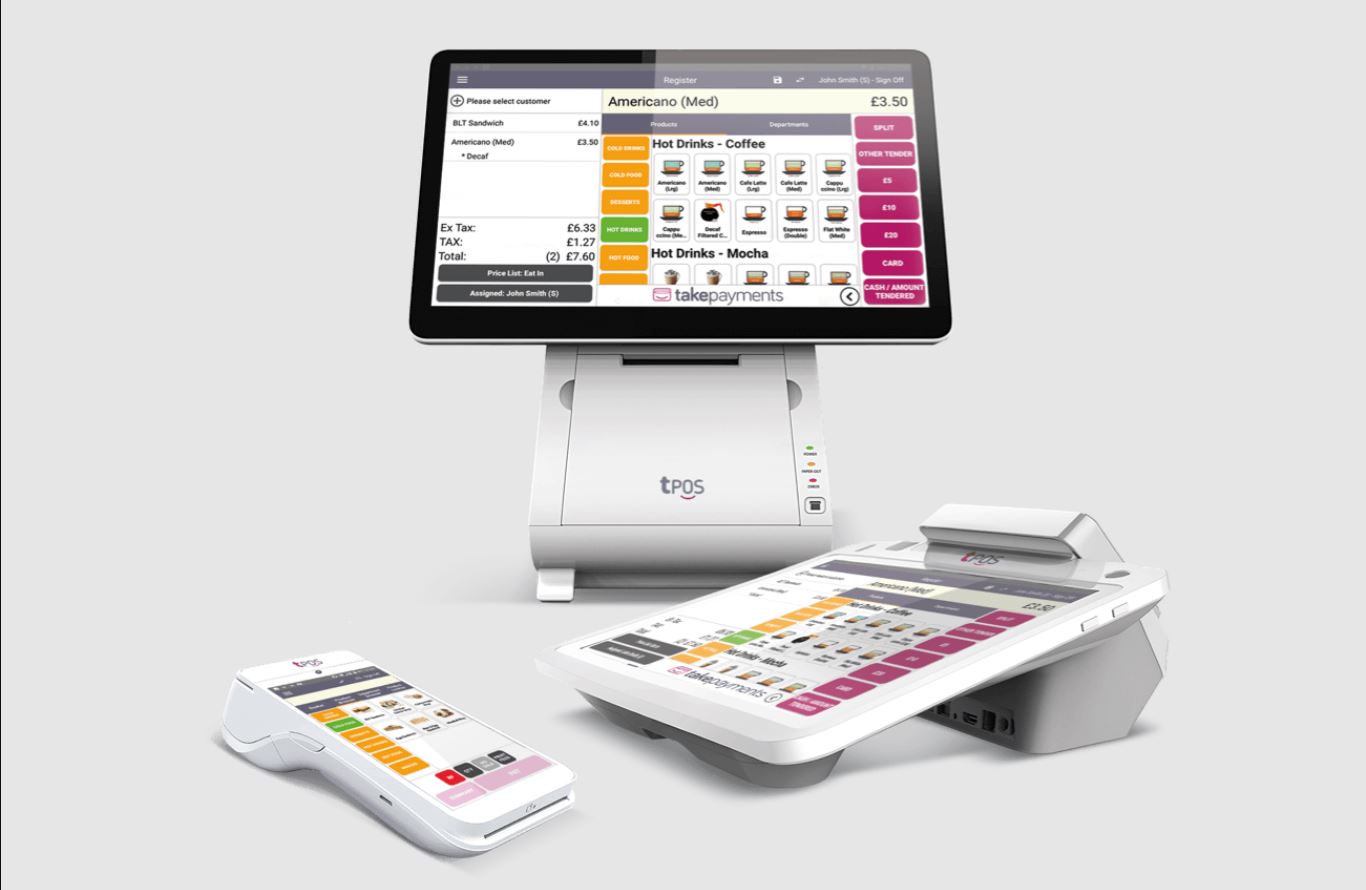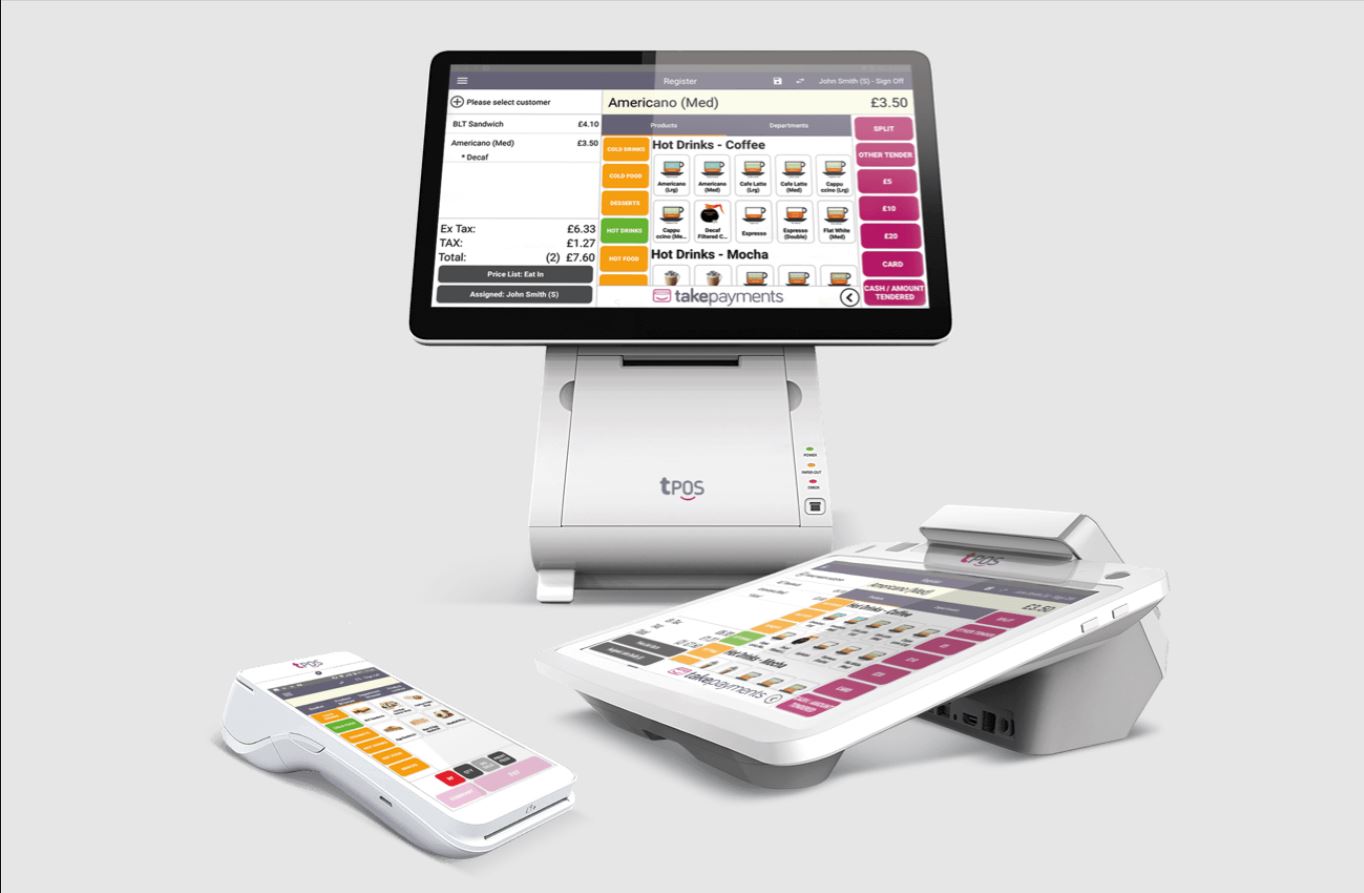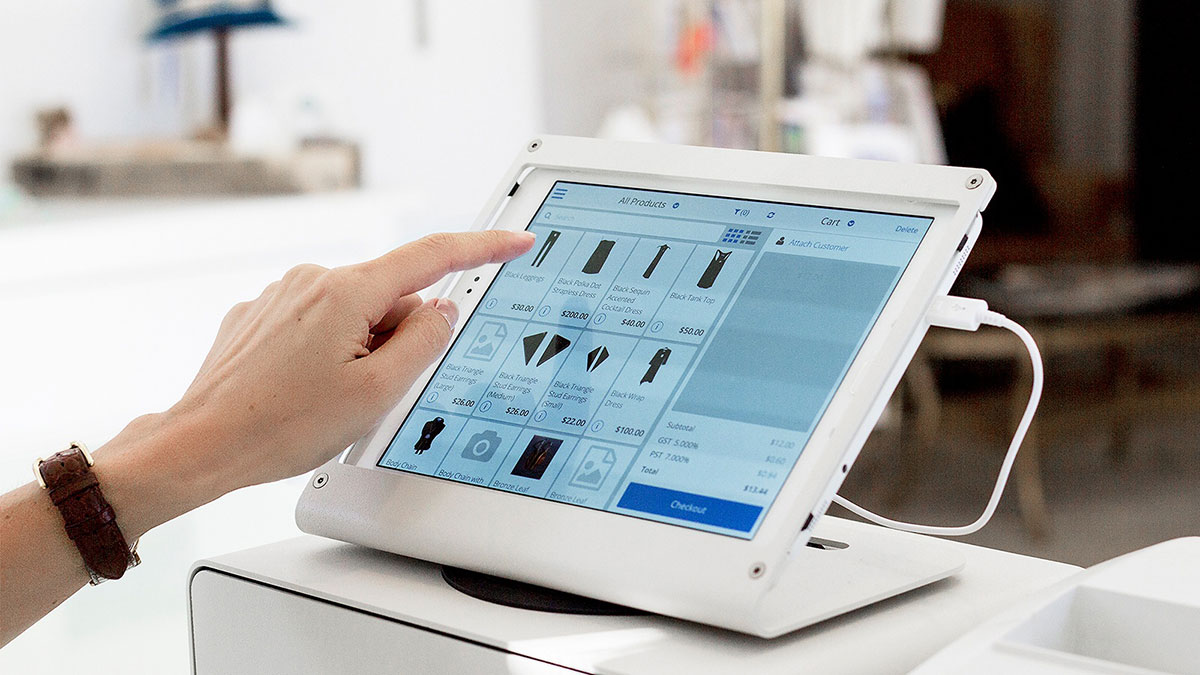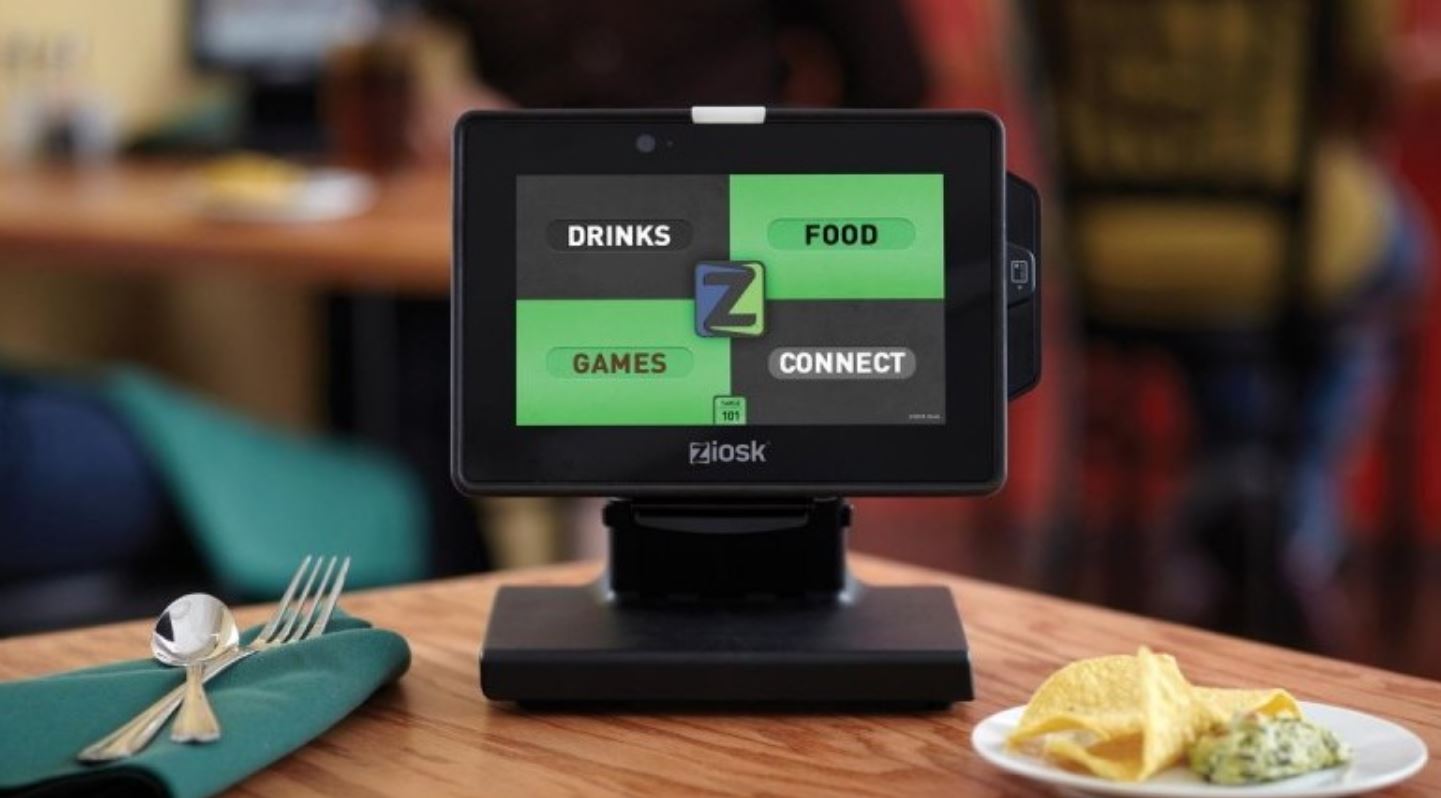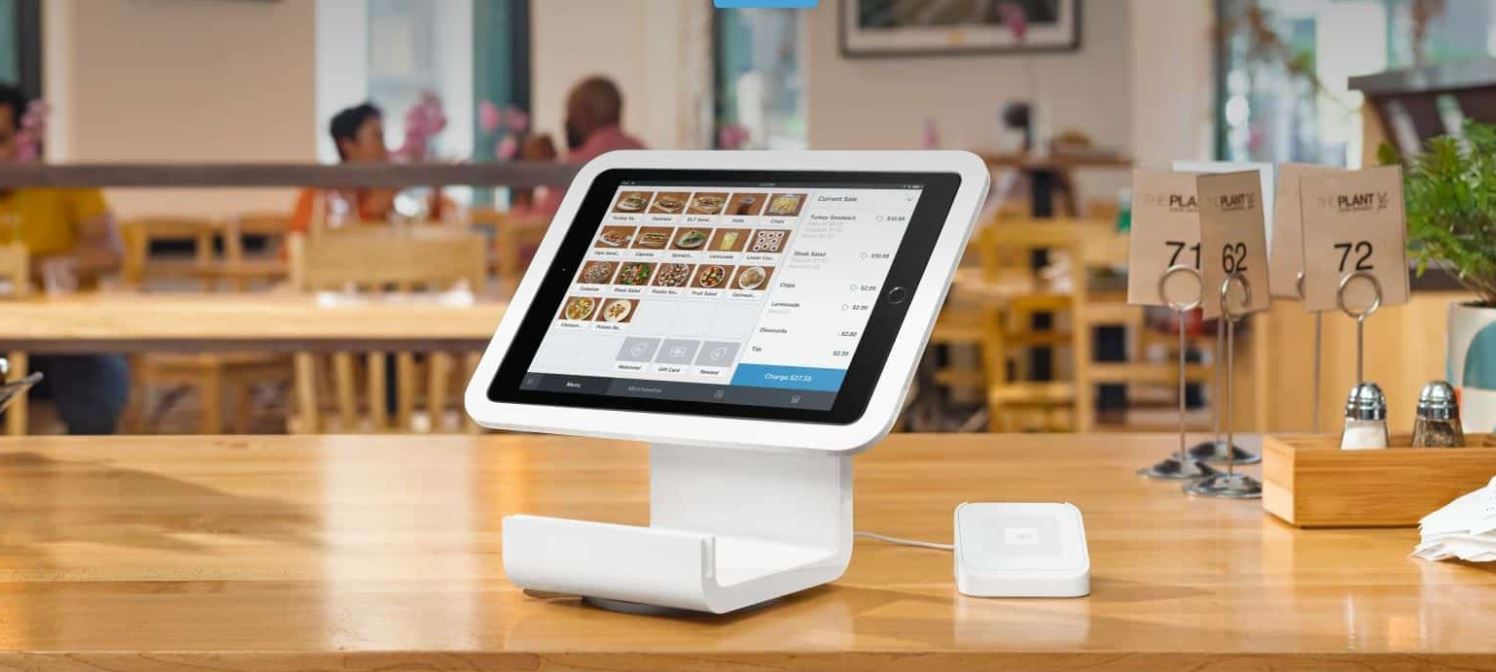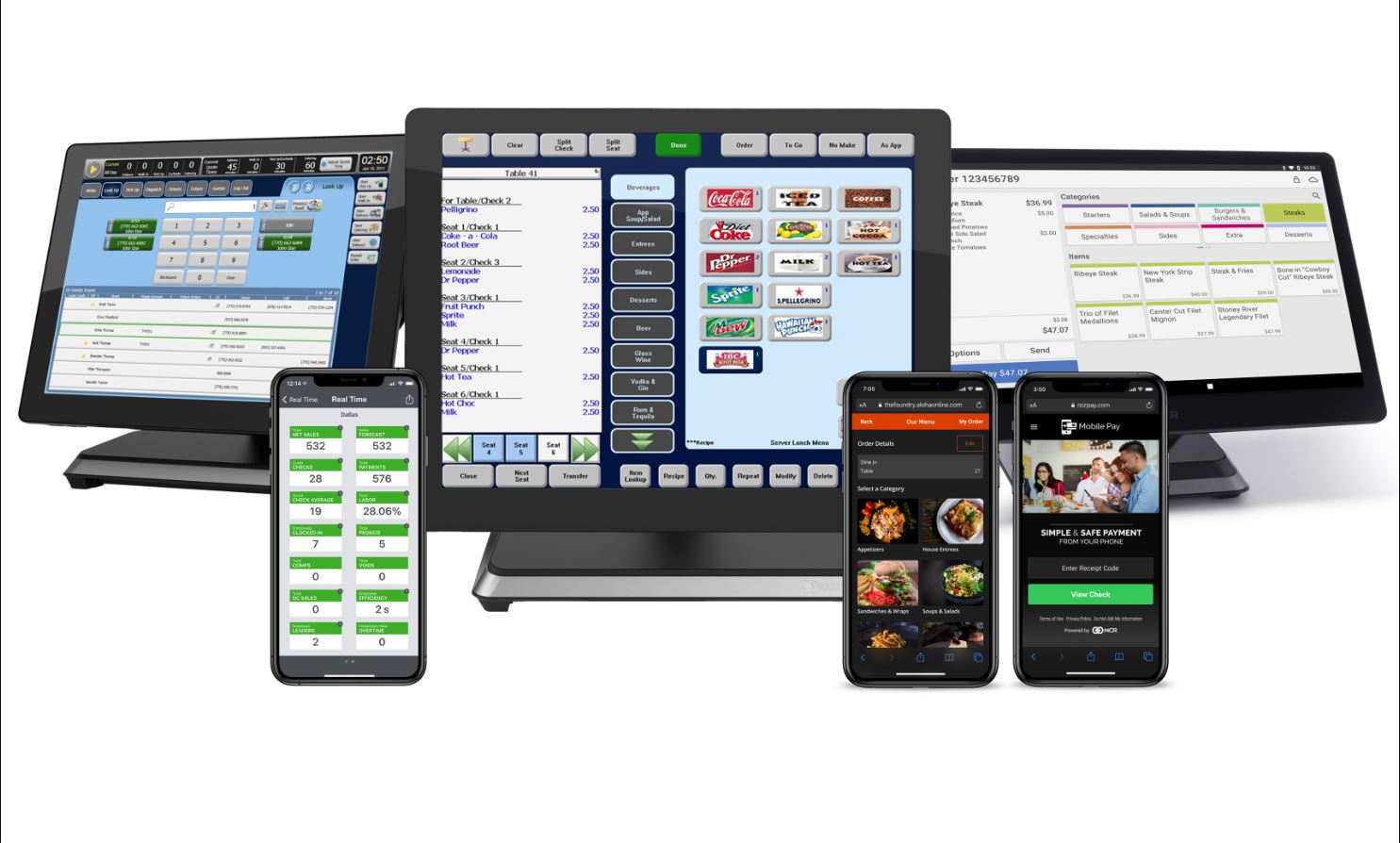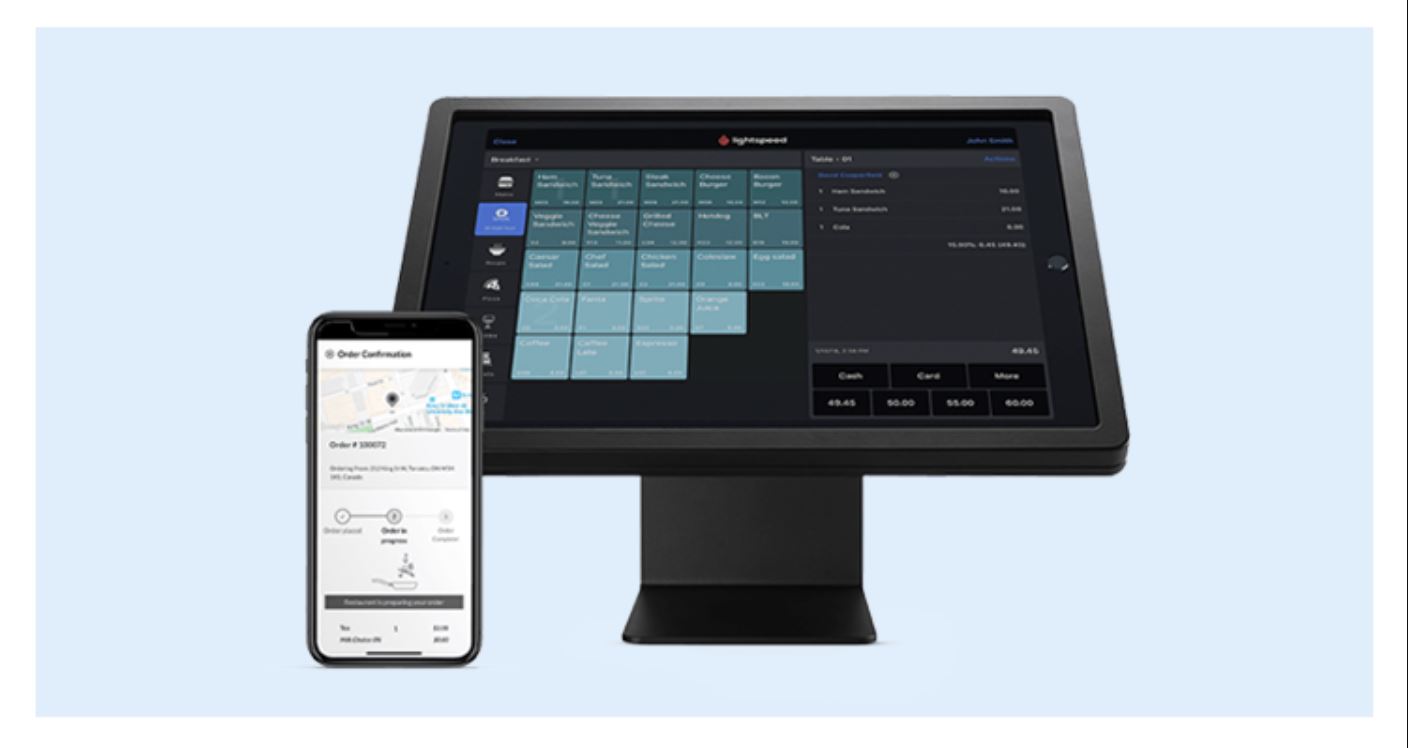What is a POS System?
A Point of Sale (POS) system is a software and hardware solution that allows businesses to process transactions and manage their sales operations. It serves as a central hub where you can complete sales transactions, handle inventory management, generate reports, and more. In simple terms, a POS system acts as a digital cash register that streamlines the sales process and provides valuable insights into your business.
With a POS system, you can effortlessly accept various types of payments, including credit cards, debit cards, and mobile wallets, providing convenience to your customers. It also enables you to track inventory levels in real-time, helping you avoid stockouts or overstocking. Additionally, a POS system can provide detailed sales reports and analytics, allowing you to make data-driven decisions to optimize your operations.
Modern POS systems are designed to be user-friendly and intuitive, with touchscreen interfaces and customizable features that cater to the specific needs of different industries. Whether you’re running a retail store, restaurant, or hospitality establishment, a POS system can greatly simplify your day-to-day operations and enhance the customer experience.
Another significant benefit of using a POS system is the ability to integrate it with other business tools and applications. This integration can streamline processes, improve efficiency, and provide a seamless experience for both customers and staff. For example, integrating your POS system with an e-commerce platform allows you to synchronize inventory and sales data, providing a unified view of your business across online and offline channels.
In summary, a POS system is a crucial tool for businesses seeking to streamline their sales operations, improve customer service, and gain valuable insights into their business performance. With its ability to process transactions, manage inventory, and integrate with other systems, a POS system offers a comprehensive solution for businesses of all sizes and industries.
Benefits of Integrating with a POS System
Integrating your existing business tools and applications with a POS system offers a plethora of benefits that can greatly enhance your operations and drive business growth. Here are some of the key advantages:
- Streamlined Operations: By integrating your POS system with other tools such as inventory management software, customer relationship management (CRM) software, or accounting software, you can eliminate the need for manual data entry and reduce the risk of errors. This streamlines your operations and saves valuable time and effort.
- Unified Inventory Management: Integration allows you to automatically update your inventory records across various sales channels. This ensures that you have accurate information about stock levels, making it easier to fulfill orders and minimize the risk of overselling or stockouts. Real-time inventory synchronization also helps you better forecast demand and optimize your purchasing decisions.
- Enhanced Customer Experience: Integrating your POS system with customer-facing applications, such as loyalty programs or CRM systems, enables you to provide personalized experiences and tailored promotions to your customers. This helps improve customer satisfaction and loyalty, leading to increased sales and repeat business.
- Efficient Reporting and Analytics: When your POS system is integrated with your reporting and analytics tools, you can generate comprehensive reports and gain valuable insights into your sales, inventory, and customer behavior. This data-driven approach empowers you to make informed decisions, identify trends, and identify areas of improvement.
- Seamless Omni-Channel Experience: Integration allows you to offer a seamless shopping experience across multiple channels, whether it’s in-store, online, or through mobile devices. Customers can view consistent pricing, inventory availability, and promotions, regardless of the channel they choose, resulting in a cohesive and satisfying experience.
By integrating your POS system with other business tools, you can leverage the power of automation and data synchronization to optimize your operations, improve customer service, and drive business growth. It eliminates manual tasks, reduces errors, and provides you with real-time insights to make informed decisions. With these advantages, integrating with a POS system is a strategic move for businesses looking to stay competitive in today’s dynamic marketplace.
Choosing the Right POS System for Integration
When it comes to integrating your business tools with a POS system, selecting the right POS system is of paramount importance. Here are some factors to consider when choosing a POS system for integration:
- Compatibility: Ensure that the POS system you choose is compatible with the tools you want to integrate. Check if it offers APIs or pre-built integrations with popular software applications such as inventory management, accounting, or e-commerce platforms.
- Scalability: Consider the future growth and expansion plans of your business. Choose a POS system that can scale alongside your business, accommodating additional locations, increased inventory, and growing customer demands.
- User-Friendliness: The ease of use and intuitive interface of the POS system is crucial for both your staff and customers. Opt for a system that requires minimal training and offers a seamless checkout experience.
- Customizability: Look for a POS system that can be tailored to your specific business needs. Check if it allows you to customize menus, settings, or workflows, ensuring that it aligns with your operational requirements.
- Security: Security is paramount when it comes to handling customer data and ensuring secure transactions. Choose a POS system that adheres to industry standards and offers robust security features, including data encryption and secure payment processing.
- Support and Updates: Consider the level of support and updates provided by the POS system provider. Ensure that they offer reliable customer support and regularly roll out updates and enhancements to address any issues or improve system functionality.
- Cost and Pricing: Evaluate the cost and pricing structure of the POS system. Consider factors such as upfront fees, monthly subscriptions, transaction fees, and additional charges for integrations and support. Determine if the benefits outweigh the costs for your business.
It is advisable to thoroughly research and compare different POS systems, read user reviews, and even request demos or trials before making a decision. Additionally, consult with your team and IT professionals to ensure that the chosen POS system aligns with your business objectives and technical requirements.
By carefully selecting a POS system that meets your integration needs, you can set your business up for success, streamline operations, and unlock the full potential of your integrated business tools.
Understanding the Integration Process
Integrating your POS system with other business tools involves a systematic process that ensures seamless communication and data synchronization between different systems. Here’s a step-by-step guide to understanding the integration process:
- Identify Integration Needs: Start by assessing your integration requirements. Determine which business tools or applications you want to integrate with your POS system. Consider factors such as inventory management, e-commerce platforms, accounting software, customer relationship management (CRM) systems, and any other tools crucial to your operations.
- Research Integration Options: Research and explore integration options available for your POS system. Check if the POS system provider offers native integrations or pre-built connectors for the tools you want to integrate. Additionally, consider third-party integration solutions or the possibility of custom development if necessary.
- Evaluate Compatibility: Ensure that the POS system and the tools you want to integrate are compatible and can seamlessly exchange data. Assess the APIs or integration capabilities provided by the POS system and the other tools to ensure successful integration.
- Plan Data Synchronization: Define how data will flow between the POS system and your integrated tools. Determine the frequency and scope of data synchronization, including items, pricing, inventory levels, sales transactions, customer information, and any other relevant data.
- Configure Integration Settings: Work with your POS system provider or integration solution to configure integration settings. This may involve setting up API keys, mapping data fields, establishing authentication protocols, or creating rules for data transfer and synchronization.
- Test Integration: Before going live, thoroughly test the integration between your POS system and the other tools. Verify that data is accurately exchanged, transactions are processed correctly, and inventory levels are properly updated. Conduct end-to-end testing to identify and resolve any issues or discrepancies.
- Train Staff: Provide appropriate training to your staff to ensure they understand how to use the integrated system effectively. Train them on any new workflows, processes, or features resulting from the integration. Encourage staff to provide feedback and address any concerns they may have.
- Maintain and Monitor: Regularly monitor the integration to ensure the smooth flow of data and troubleshoot any potential issues. Stay updated on software updates, security patches, and compatibility issues. Maintain open communication with your POS system provider and integration solution for support and updates.
Understanding the integration process is essential to ensure a successful integration between your POS system and other business tools. By following these steps and working closely with your POS system provider and integration solution, you can achieve a seamless and efficient flow of data across your integrated systems, ultimately enhancing your business operations and driving growth.
Steps to Integrate with a POS System
Integrating your business tools with a POS system can greatly streamline your operations and provide a unified view of your business. Here are the steps to successfully integrate your tools with a POS system:
- Identify Integration Needs: Determine which tools or applications you want to integrate with your POS system. This could include inventory management, accounting software, e-commerce platforms, or CRM systems. Clearly define your integration goals and the specific functionalities you aim to achieve through integration.
- Research Integration Options: Explore the integration options available for your POS system. Check if your POS system provides built-in integrations or connectors for popular business tools. Alternatively, consider third-party integration solutions that can bridge the gap between your POS system and other tools.
- Evaluate Compatibility: Ensure that your POS system and the tools you want to integrate are compatible. Confirm if the POS system and the other tools have APIs or integration capabilities that allow seamless exchange of data. Review documentation or consult with your POS system provider to determine integration feasibility.
- Select Integration Solution: Choose the integration solution that best fits your needs. If your POS system offers native integrations, follow the provided guidelines and documentation. For third-party integration solutions, select a reliable provider with a good track record. Alternatively, consider custom development if you have specific requirements that cannot be met by existing integration options.
- Configure Integration Settings: Set up the integration between your POS system and the selected tools. This may involve setting API keys, establishing authentication protocols, mapping data fields, and determining the desired data synchronization frequency. Follow the instructions provided by the integration solution or consult with experts if needed.
- Test Integration: Before going live, thoroughly test the integration to ensure its functionality and accuracy. Conduct test transactions, check data synchronization, and verify that all integrated processes work seamlessly. Monitor and troubleshoot any issues that arise and make necessary adjustments to optimize the integration.
- Train Users: Provide training to your staff on how to use the integrated system effectively. Familiarize your team with the new workflows, processes, and features resulting from the integration. Encourage them to provide feedback and address any questions or concerns they may have.
- Monitor and Maintain: Regularly monitor the integration to ensure it continues to function properly. Stay updated with software updates and security patches for both your POS system and integrated tools. Establish a communication channel with your POS system provider and integration solution for ongoing support and updates.
By following these steps, you can successfully integrate your business tools with a POS system, optimize your operations, and unlock the benefits of a unified and streamlined business management system.
Common Challenges and How to Overcome Them
Integrating a POS system with other business tools can be a complex process that comes with its own set of challenges. Here are some common challenges that businesses may face during the integration process and strategies to overcome them:
- Lack of Compatibility: One of the key challenges is ensuring compatibility between your POS system and the tools you want to integrate. To overcome this, thoroughly research your POS system’s integration capabilities and verify if it supports the necessary APIs or connectors for your specific tools. Engage with your POS system provider or seek assistance from integration experts to identify potential compatibility issues and explore alternative integration solutions.
- Data Synchronization: Ensuring accurate and timely data synchronization between your POS system and integrated tools can be a challenge. To overcome this, establish clear data synchronization protocols and define the frequency and scope of data updates. Regularly test the integration and monitor the accuracy of data exchange. Whenever possible, opt for real-time or near-real-time synchronization to minimize data discrepancies.
- Complex Integration Setup: Configuring the integration settings and mapping data fields can be a complex task. To overcome this challenge, make use of available documentation and resources provided by your POS system and integration solution. Seek the assistance of integration experts or consider working with a reputable integration service provider to simplify the setup process and ensure smooth integration.
- Training and Adoption: Introducing a new integrated system to your staff may require additional training and may encounter resistance. Overcome this challenge by providing comprehensive training sessions to familiarize your staff with the integrated system’s features and workflows. Highlight the benefits of the integrated system, such as time savings, improved efficiency, and better decision-making capabilities, to encourage adoption and reduce resistance.
- Technical Support: Technical issues and troubleshooting can pose challenges during and after the integration process. To overcome this, ensure that you have access to reliable technical support from your POS system provider and integration solution. Maintain open lines of communication with their support teams to address any issues promptly. Engage with the user communities and forums associated with your POS system and integrated tools to seek advice and suggestions from other users who may have encountered similar challenges.
- Security and Compliance: Handling sensitive customer data and ensuring compliance with data protection regulations can be a challenge during integration. Overcome this by adopting security best practices, such as using encrypted connections and secure authentication protocols. Regularly review and update security measures to address any vulnerabilities. Consult with legal experts to ensure compliance with relevant data protection and privacy regulations.
By recognizing and proactively addressing these common challenges, businesses can navigate the integration process more effectively and ensure a successful integration between their POS system and other business tools. With proper planning, support, and ongoing monitoring, businesses can reap the benefits of a seamless and efficient integrated system.
Examples of Successful Integration with POS Systems
Integration with a POS system has proven to be beneficial for countless businesses across various industries. Here are a few noteworthy examples of successful integration to showcase the impact and advantages:
- Online-Offline Integration: An e-commerce retailer integrated their online store with their POS system. This allowed them to synchronize inventory levels in real-time, ensuring accurate stock information for both online and offline channels. As a result, they were able to avoid overselling or stockouts, provide accurate product availability to customers, and streamline the fulfillment process.
- CRM Integration: A hotel chain integrated their customer relationship management (CRM) system with the POS system in their restaurants and bars. This integration allowed them to track customer preferences, dining habits, and spending patterns. By analyzing this data, they were able to personalize marketing efforts, offer tailored promotions, and provide a personalized guest experience, leading to increased customer loyalty and revenue.
- Accounting Integration: A small business integrated their POS system with their accounting software. This integration resulted in automatic and accurate syncing of sales data, including transaction details, revenue figures, and tax information. As a result, they were able to eliminate manual data entry, reduce human errors, and streamline their financial reporting and reconciliation processes, saving time and improving accuracy.
- Mobile Payment Integration: A trendy café integrated their POS system with mobile payment options like Apple Pay and Google Pay. This allowed customers to easily make payments using their smartphones, eliminating the need for physical cards or cash. By providing this convenient payment option, the café enhanced the customer experience, reduced payment processing time, and attracted tech-savvy customers.
- Inventory Management Integration: A retail store integrated their POS system with their inventory management software. This integration enabled them to keep track of stock levels in real-time, as well as receive automatic notifications for low inventory items. With improved inventory visibility, they were able to optimize their purchasing decisions, reduce overstocking or stockouts, and ultimately enhance their overall operational efficiency.
These examples demonstrate how successful integration with a POS system can yield tangible benefits for businesses. By seamlessly connecting their POS system with other tools or applications, businesses can improve operational efficiency, offer personalized experiences, automate processes, and gain valuable insights into their operations.
It’s important to note that every integration journey is unique to a business’s specific needs and goals. The examples above serve as inspiration and illustrate the diverse possibilities that integration can offer. With careful planning, a thorough understanding of business requirements, and effective implementation, any business can achieve successful integration with a POS system.
Best Practices for Successful Integration
Integrating a POS system with other business tools is a significant undertaking that requires careful planning and execution. To ensure a successful integration, consider the following best practices:
- Define Integration Goals: Clearly define your integration goals and what you hope to achieve by integrating your POS system with other tools. Establish key performance indicators (KPIs) to measure the success of the integration, such as improved efficiency, increased sales, or enhanced customer satisfaction.
- Thoroughly Research Integration Options: Research different integration options available for your POS system. Consider both native integrations provided by the POS system provider and third-party integration solutions. Compare their features, capabilities, and user reviews to ensure they align with your business requirements.
- Create a Detailed Integration Plan: Develop a comprehensive integration plan that outlines the various steps, timelines, and responsibilities involved in the integration process. Assign specific roles and responsibilities to team members involved in the integration, and regularly communicate and collaborate to ensure smooth progress.
- Test and Validate: Before fully implementing the integration, thoroughly test the integration in a controlled environment. Test various scenarios, such as different transaction types, inventory updates, and data syncing, to identify and resolve any issues. Validate the accuracy and reliability of data exchange between systems to ensure seamless integration.
- Ensure Data Security: Prioritize data security throughout the integration process. Implement robust security measures, such as encryption, user authentication, and secure data transfer protocols. Regularly update and patch software to address any vulnerabilities and comply with data protection regulations.
- Communicate and Train Staff: Effective communication and training are key to successful integration. Keep your staff informed about the integration process, its benefits, and any changes to workflows or procedures. Provide comprehensive training to ensure they are equipped with the knowledge and skills to utilize the integrated system effectively.
- Monitor and Optimize: Continually monitor the integrated system’s performance and track key metrics to identify areas for improvement. Regularly engage with your POS system provider and integration solution to stay updated on software updates, enhancements, and new features that can further optimize the integration. Actively seek feedback from staff and customers to continuously improve the integrated system’s functionality and usability.
- Stay Abreast of Technology Trends: Keep up with the latest technological advancements and industry trends related to integration and POS systems. Be open to adopting new solutions or expanding integration capabilities as your business needs evolve.
By following these best practices, you can maximize the success of your integration efforts and fully leverage the benefits of integrating your POS system with other business tools. Remember to adapt these practices to suit your specific business requirements and seek professional guidance when necessary.
Conclusion
Integrating your POS system with other business tools can be a game changer for your operations. It streamlines processes, improves efficiency, and provides valuable insights to help drive business growth. By carefully selecting the right POS system, understanding the integration process, and following best practices, businesses can successfully integrate their POS systems and unlock the potential of a unified business management system.
Throughout this article, we explored the concept of a POS system and its benefits, discussed the factors to consider when choosing a POS system for integration, and outlined the steps to integrate with a POS system. We also addressed common challenges that businesses may face during integration and provided strategies to overcome them. Additionally, we highlighted examples of successful integration and emphasized the importance of best practices for a successful integration.
Remember that each integration journey is unique to a business’s specific needs and goals. It is crucial to thoroughly research your options, plan carefully, and seek support from your POS system provider or integration experts when needed. Keep an open line of communication, stay up to date with technology trends, and continuously monitor and optimize the integrated system to ensure its ongoing success.
Integrating your POS system with other tools is a powerful step towards improving your business’s efficiency, customer experience, and overall success. With the right approach, you can enjoy the benefits of streamlined operations, accurate data synchronization, and enhanced business insights. Start exploring the possibilities of integrating your POS system today and unlock the potential for greater success in your business!







